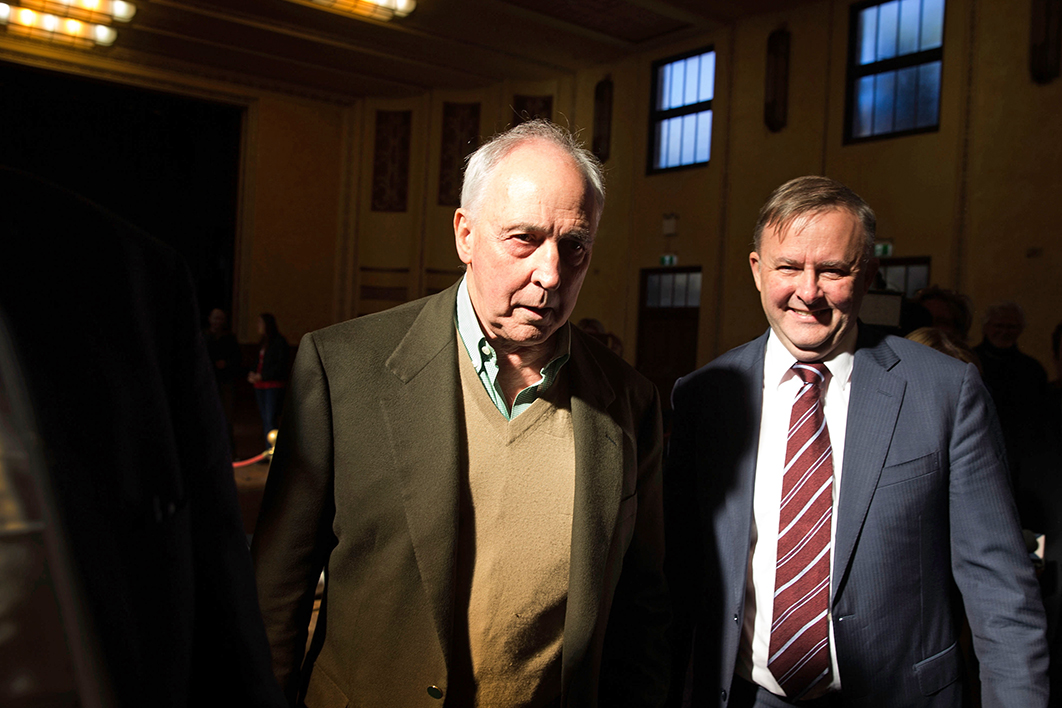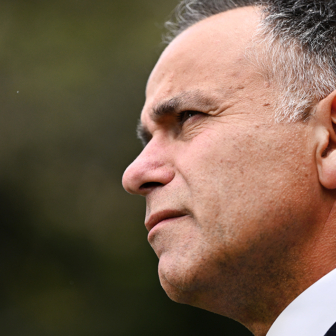It was late 2003. Labor leader Simon Crean had succumbed to the white-anting and stood aside; caucus was preparing to choose between Kim Beazley and Mark Latham. At a gathering of the Labor faithful, amid whispers of head-office skullduggery, Paul Keating characterised the battle in typically colourful fashion.
“Only two factions matter,” he declared, “the smart people and the dills.”
The former prime minister was oh so right, but not in the way he intended, for he was enthusiastically supporting Latham (and presumably didn’t number himself among the dills).
Keating’s remark was like most of the advice he’s offered to the party since leaving politics: more sizzle than sausage, and unhelpful as well. He was a hugely substantial figure in his time, and an eloquent salesman, but the way he characterises his political career, and the lessons he draws from it, tend to be shaped by the requirements of his ego. His recurrent theme, for over two decades now, is that Labor post-1996 has forgotten the lessons he (okay, Bob Hawke too) taught it about building a new constituency and bringing the voters along, that it’s no longer the party of reform — well, you know it by heart.
Missing from Keating’s recollections is the central role of ferocious negativity, of which he was a most effective exponent: those utterly cynical demolitions of opposition policies, many of which he had either advocated in the past or would argue for later.
He has even implicitly scolded Beazley for opposing the Howard government’s GST in 1998, which should go in the dictionary under “chutzpah.” And he never quite gets around to explaining where the huge 1996 defeat fits on the canvas.
Having helped elevate Latham to the top, he reportedly urged the new leader to take an unfunded personal tax cut to the 2004 election. John Howard and Peter Costello wouldn’t know how to respond, he reckoned.
I suspect they might have known exactly how to react. They would have latched onto it with glee. Imagine the fun Costello would have had in parliament. That script writes itself.
But the real problem with that tiresome “be like Hawke and Keating” mantra we’ve all suffered for almost two decades (when did it start, in 2001–02?) is that those two men did what they did in government, not in opposition. Keating hasn’t been part of an opposition leadership team since 1983, when he was a nervous, inexperienced, stop-gap shadow treasurer who mostly left the economic talk to his more knowledgeable boss. Winning from opposition is not something he’s very familiar with.
And much of the memory of that time is shrouded in myth. The political class tends to forget that none of those reforms that commentators still celebrate — floating the dollar, deregulation, tariff reductions, privatisation, etc., etc. — was taken to an election first. Even once it was behind the armoury of government, Labor wasn’t incautious enough to do that.
On 2 December 2003 the dills outnumbered the smart people, just, by forty-seven to forty-five. Sixteen years later, six Latham supporters remain in parliament, four of them — Penny Wong, Joel Fitzgibbon, Catherine King and Brendan O’Connor — on the frontbench. The other two, Maria Vamvakinou and Kim Carr, sit at the back. (Carr was a mover and shaker — on the winning side — of both the 2003 and 2006 contests, but his status as a factional heavy has lapsed.)
And the surviving smart ones? There are just three, all frontbenchers: Anthony Albanese, Tanya Plibersek and Anthony Byrne.
Albanese is now opposition leader, and his record in the 2003 and subsequent leadership stoushes suggests he is smart in that regard, and not susceptible to Latham–Gillard fantasies of muscling up, fighting on values, and recapturing battlers’ hearts and souls. He possibly understands that in a two-party system (albeit an eroding one) softly committed voters choose at least as much on the basis of whom they don’t want to win as whom they do. If the government is on the nose, there are times when the opposition should stand back and let the votes flow to it. Fighting too hard can sometimes muddy the waters.
Does Albanese have what it takes to win the next federal election? The answer is, yes, of course, but…
Here’s a secret: election outcomes are mostly about luck and timing, about being in the right place at the right time. After the victory, let the storytellers construct their narratives and tell their tall tales about how only that leader could have done it.
Scott Morrison ran a good campaign this year, no doubt about it (this is not being smart after the fact; see, for example, this election morning article). Aimed squarely at the middle, it was light on ideology and free of the puerility that he from time to time lets slip. He emphasised the theme that Howard spoke out loud fifteen years ago, but which is usually an unenunciated major driver of federal election results: whom do you trust to run the economy?
Labor, by contrast, seemed fixated on its base, or a part of it, as if victory is achieved by enthusing the true believers so greatly that the passion spills over into a national majority. With all those hits at the “top end of town,” Shorten sounded a lot more “left wing” than was sensible. But most of all the government was unbelievably lucky to face an opposition taking great big policies to the ballot box.
Bill Shorten wasn’t greatly liked by voters, but that didn’t have to matter much. More importantly, he wasn’t trusted. His presentation seemed rehearsed and inarticulate. What was he hiding?
Individually, those characteristics weren’t enough to demolish Labor. It was the ambitious policy agenda combined with Shorten’s persona that created a perfect storm. The two key plans themselves, on negative gearing and franking credits, were fine — overdue reforms in the mould of the sainted Hawke and Keating — but taking them to the ballot box first, and from opposition, was sheer madness.
(Could it really be true that, in private, Keating encouraged Shorten and Chris Bowen along this path? Could he not imagine how he himself would have relished the opportunity to avail himself of such material when he was in government?)
What does it all mean for Labor and its new leader? The expert consensus seems to be that there’s about a fifty–fifty chance of a recession before the next election. Either way, this will be a nine-year-old government by then, not overly blessed with vigour or imagination, never greatly loved, facing a Senate that might be more cooperative than its recent predecessors but is still hard going.
As long as Labor doesn’t do too much dumb stuff, it should be odds-on to take office in 2022. Albanese’s biggest challenge is remaining leader until then. Morrison’s miracle win has elevated him to political maestro status. He can’t be beaten, they’ll say, no matter how bad things get; he’s a fighter, best with his back against the wall, he always comes back. And the spectacular 2019 opinion poll fail will see any Labor leads adjusted down.
Shorten lasted two terms thanks to Kevin Rudd’s 2013 leadership rules. Given how that ended, and how the prime ministerial turnstile proved no barrier to the Coalition’s re-election, many in caucus will conclude that stability at the top is overrated. And Kevin’s rules can be overturned by a party-room vote (or, more likely, the threat of one, with the incumbent being prevailed on to stand down and allow another to run uncontested).
They might even, as in the summer of 2003, decide that the situation is so hopeless, their everyman opponent so clever, that it wouldn’t hurt to try something really stupid.
Albanese, while not without presentational problems, is infinitely more articulate than Shorten, and seems smarter than most of his colleagues when it comes to the dynamics of elections. He’ll no doubt let through to the keeper, with good humour, the occasional strategic advice from a former prime minister.
But he’s in for the fight of his life to still be leader in 2022. •





